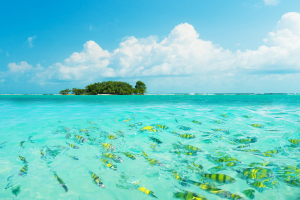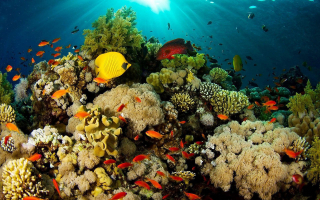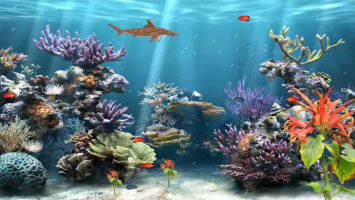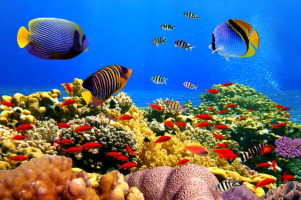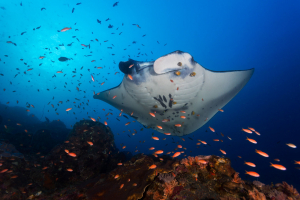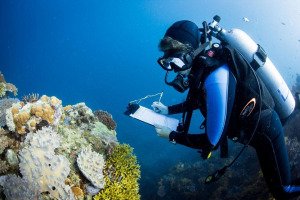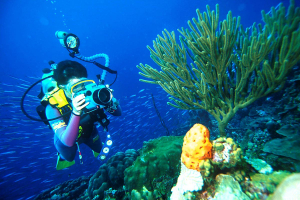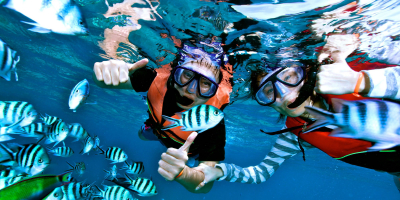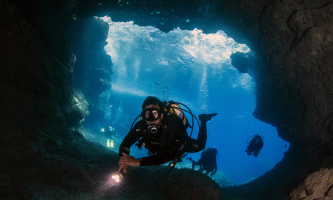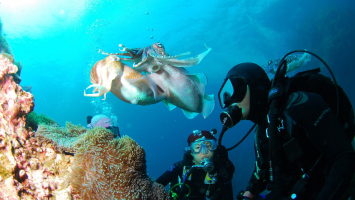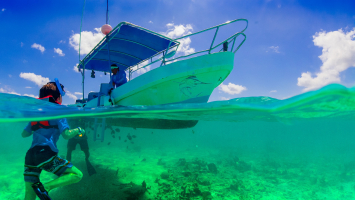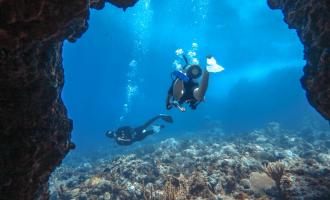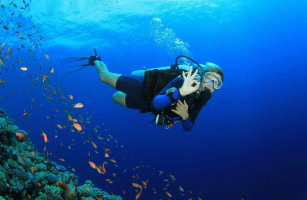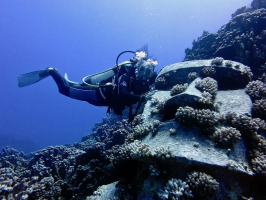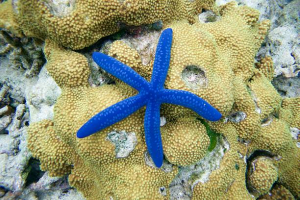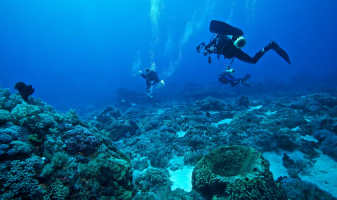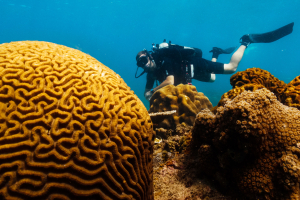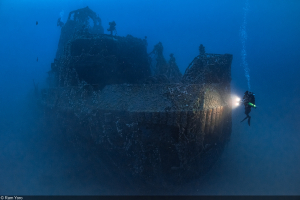Top 5 Most Popular Dive Sites In Iceland
Iceland has dive sites that are unlike any others in the world. Here you can dive between tectonic plates, visit the world’s only hydrothermal vent shallow ... read more...enough to see without a deep-sea submersible, experience hydrogen sulfide bubbles within a geothermal spring, and see a huge variety of marine life in the fjords and ocean. Here are the top picks for the most popular dive sites in Iceland.
-
Silfra is one of the most popular dive sites in Iceland and is a fissure between the North American and Eurasian tectonic plates in Thingvellir National Park. The rift was formed in 1789 by the earthquakes accompanying the divergent movement of the two tectonic plates. Silfra is the only place in the world where you can dive or snorkel directly in a crack between two tectonic plates. The earthquakes of 1789 opened up several fissures in the Thingvellir area, but the Silfra fissure cut into the underground spring filled with glacial meltwater from the nearby Langjökull glacier. The water is filtered through porous underground lava for 30-100 years before reaching the spring that feeds into Silfra. The underwater visibility of the water in Silfra will rarely if ever, be surpassed.
Silfra is said to have the clearest water in the world; feel free to have a sip of this pristine water at any point during your dive or snorkel. Although Thingvellir Lake has an abundance of fish species and trout fishing is very popular in the lake, the fish usually do not venture far into the Silfra fissure. The marine life in Silfra consists mostly of bright green “troll hair” and different types of algae that provide a color scape, unlike anything that occurs naturally above the surface.
Location: Thingvellir National Park, Reykjavík, Iceland.
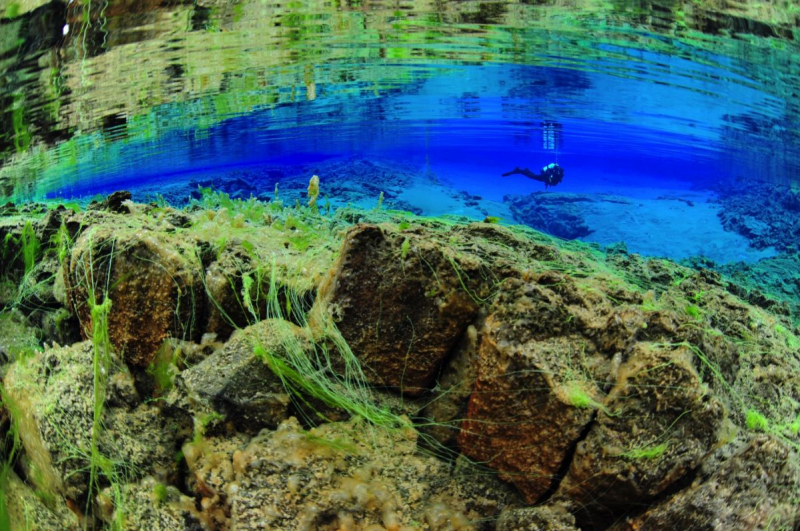
dive.is/dive-sites/silfra 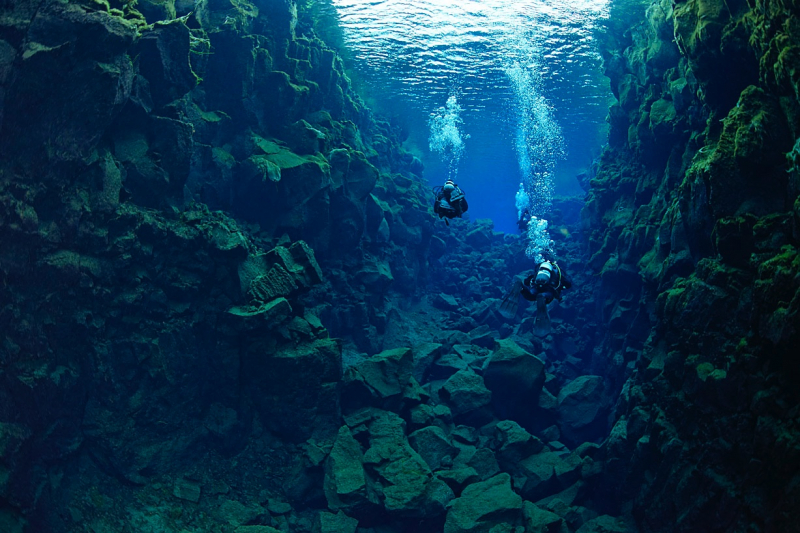
dive.is/dive-sites/silfra -
In the North of Iceland, not far from Iceland’s second-largest town Akureyri, Strýtan is among the most popular dive sites in Iceland. Located in the middle of the Eyjafjörður and at a depth of about 70 meters, a hot spring has been releasing hot water into the ocean for approximately 11,000 years. The dissolved minerals in the hot freshwater coagulate as soon as they come into contact with the cold ocean water. This process has created a 55-meter tall limestone chimney that reaches up to 15 meters under the surface. Since 2001, Strýtan has rightly been a protected natural reserve. Here divers can explore the flora and fauna that have developed and settled under these special circumstances and even feel the hot water that wells out of Strýtan. Apart from all the little creatures scurrying about, divers might see schools of cod swimming up and down along the chimney.
The Strýtan area has a number of dive sites. Most spectacular is probably the big Strýtan due to its sheer size. However, the site we refer to as “little Strýtan” has a maximum depth of 25 meters and a number of small chimneys on and around a 25 by 25-meter underwater hill. This hill is probably the most densely packed area of different varieties of marine life in Iceland. On our dives, we see pretty much everything concerning fish and critters Iceland has to offer. However, this dive site is only for advanced divers! Divers that decide to take a trip to this fantastic phenomenon need to be in very good control of their buoyancy in order to not depend on anything. They also need to be physically fit since the currents can be strong.
Location: Laufás, Iceland
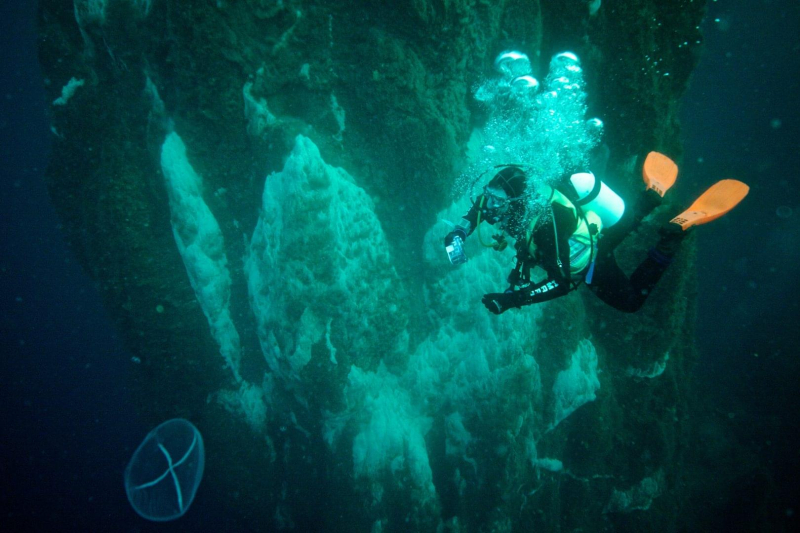
travel.padi.com 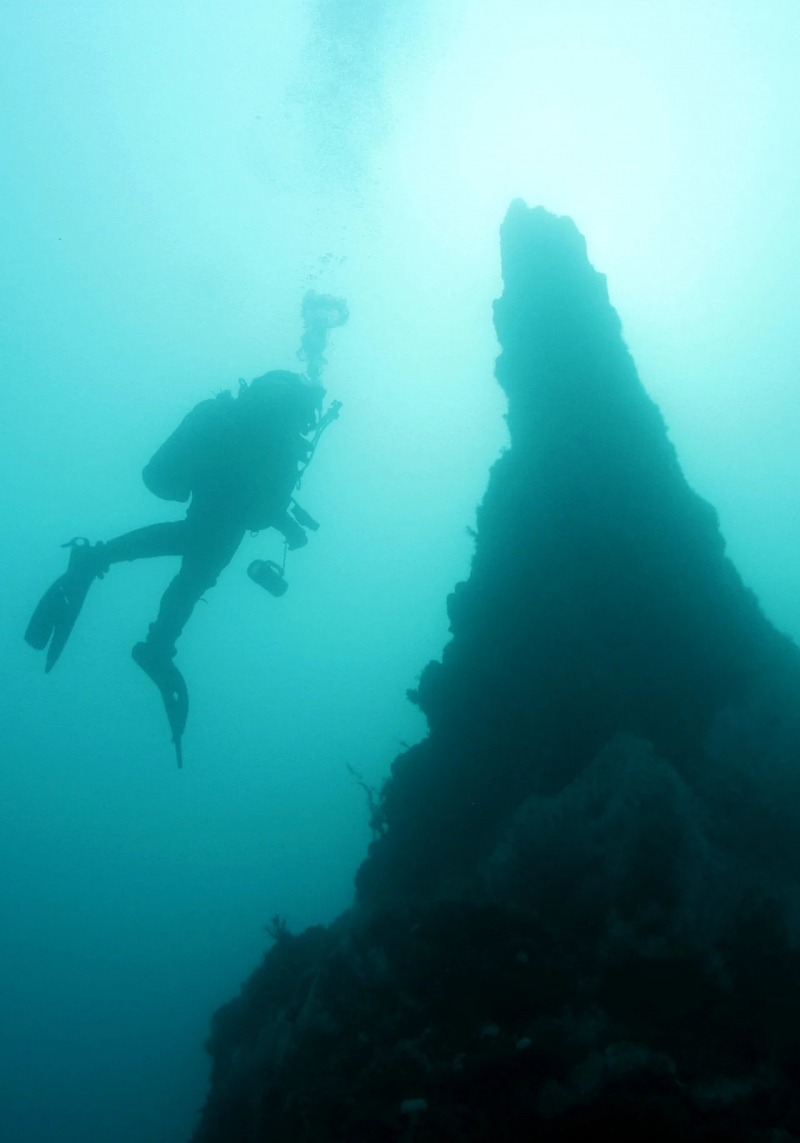
northiceland.is -
Gullfoss and Geysir are two of the main sites on the popular “Golden Circle” route. Gullfoss is a powerful waterfall located approximately 130 km inland from Reykjavík. Gullfoss means “Golden Waterfall” in Icelandic, and if you get to visit Gullfoss on a sunny day you will see that it is aptly named. The powerful falls create a mist that, when caught by the sunlight, covers the whole area in a shimmering golden veil. Gullfoss is also the site of one of the first environmental protests in Iceland to protect this land’s fragile and unique nature. A woman, who lived on a farm (near Gullfoss), successfully deterred the construction of a hydrothermal powerplant that would have destroyed this beautiful natural treasure.
As a place name, Geysir refers to the geothermal area that contains two active geysers and many boiling hot pots. Geysir means geyser in Icelandic and Geysir is also the name of the older geyser, which at the moment erupts only infrequently. The more active geyser is called Strokkur, which erupts about every 4-6 minutes. The sulfurous water paints and sculpts the land in marvelous ways. The Geysir area has long been a popular and impressive site to visit both for Icelanders and visitors.
Location: Haukadalur Valley, Iceland
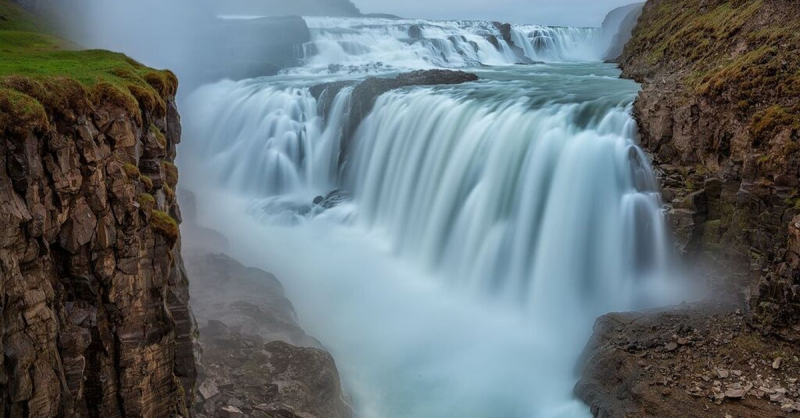
Outdoor Trip 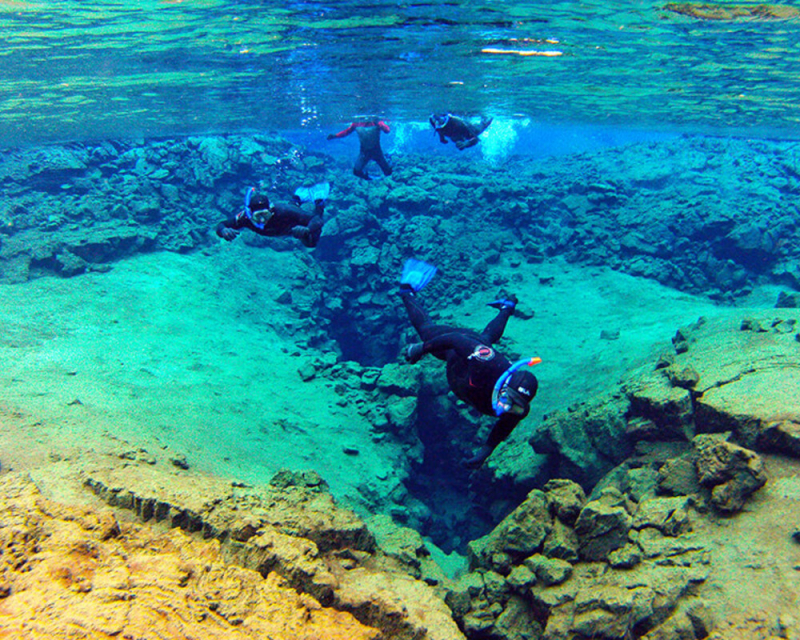
Outdoor Trip -
Gardur is one of the most popular dive sites in Iceland and is a shore dive in the ocean near Keflavik International Airport, about an hour’s drive south of Reykjavik. This fantastic dive site contains numerous species of colorful algae, which act as a food source for all manner of marine animals. It’s great for macro, but also has some kelp forests sheltering wolffish, flatfish, monkfish, and scorpionfish. You will also see cod, pollock, and maybe some Atlantic herring. Keep your eye on the blue while you’re macro hunting and a humpback or minke whale might swim past. It’s technically possible to see orcas, sperm, fin, sei, or blue whales. But it is pretty unlikely, as the site is no more than 60 feet (18m) deep. Dive in Gardur between May and September, as the winter is usually too windy for calm seas. Open-water certification is adequate, but drysuit qualification is preferred.
Location: Suðurnesjabær, Iceland
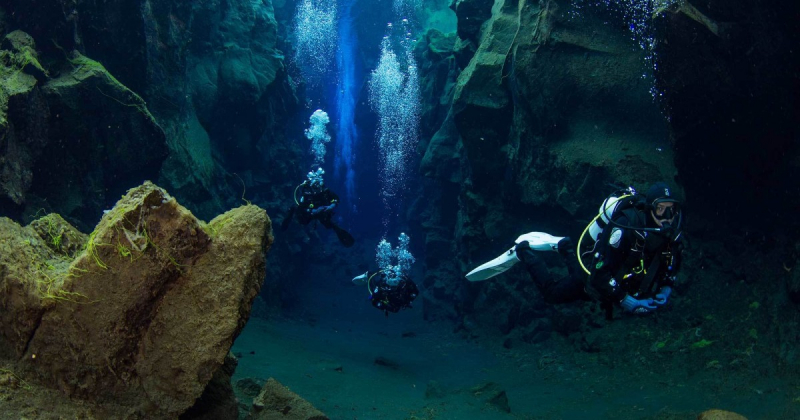
GetYourGuide 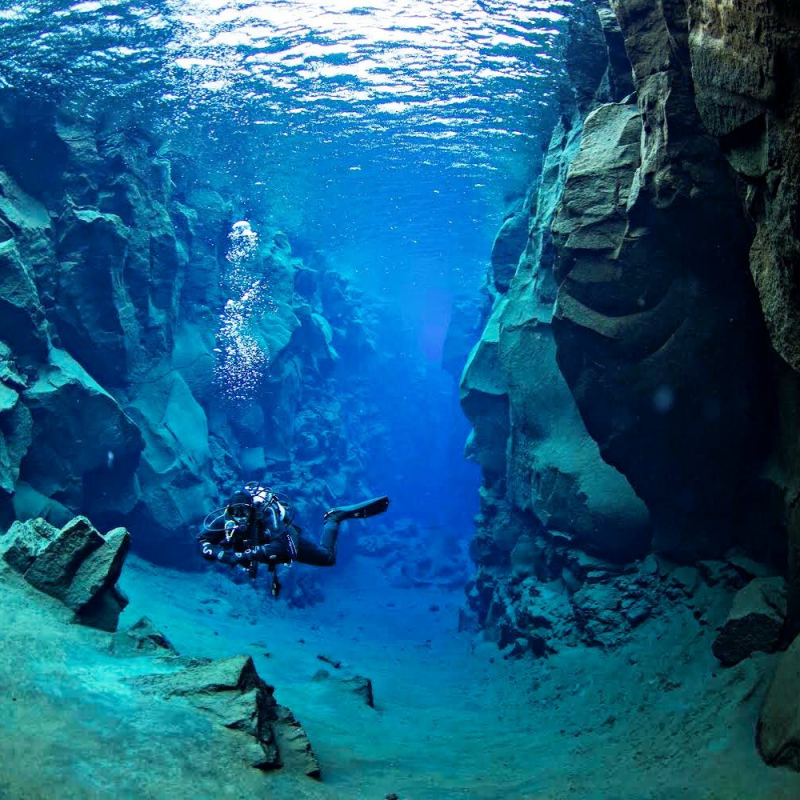
Dive.is -
Kleifarvatn Lake is among the most popular dive sites in Iceland. You can dive in a geothermal spring at Kleifarvatn Lake, 30 minutes south of Reykjavik. The drive to the lake is spectacular, past black, volcanic rocks that will make you think you’re on the moon. The dive is no different. On walking into the water, you follow a line on the lakebed to a cratered area no deeper than 33 feet (10 m). You will see continuous streams of bubbles all around you and smell a mixture of sulfur and hydrogen sulfide gases. The lakebed here has a very clay-like consistency. It looks scorched as though the gases being released used to be much hotter.
There are a few deep craters with overhanging walls and bubbles coming up from the darkness. All over the lakebed, you are also likely to see numerous dead brown trout, which makes for a very eerie experience. And just when you thought it couldn’t get any weirder, the movement of gas bubbles coming up through the lakebed causes the surrounding rocks to vibrate, which you’ll be able to feel. Tip: take an egg with you to hard boil underwater. In the summer the lake can be as warm as 57 F (14 C) but you should still dive in a drysuit. It’s a very easy dive so open-water certification is adequate. The lake freezes over in winter, so unless you’re an ice diver, visit from May to October.
Location: Reykjanes, Iceland
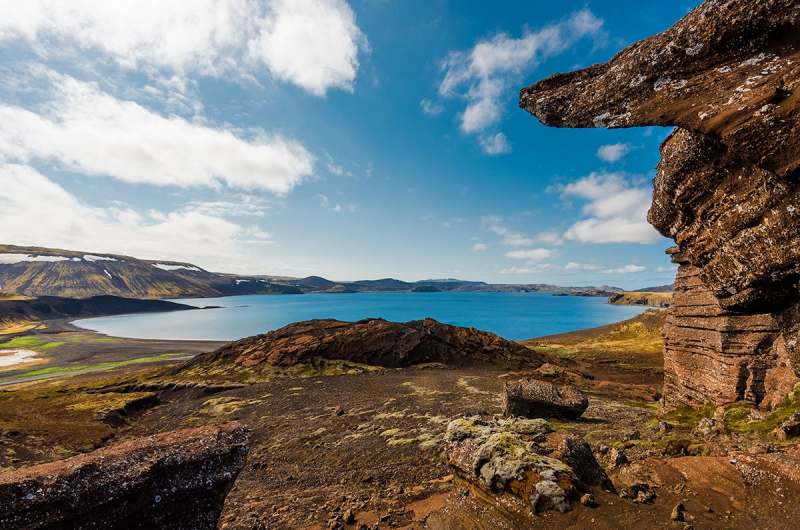
Emstrur 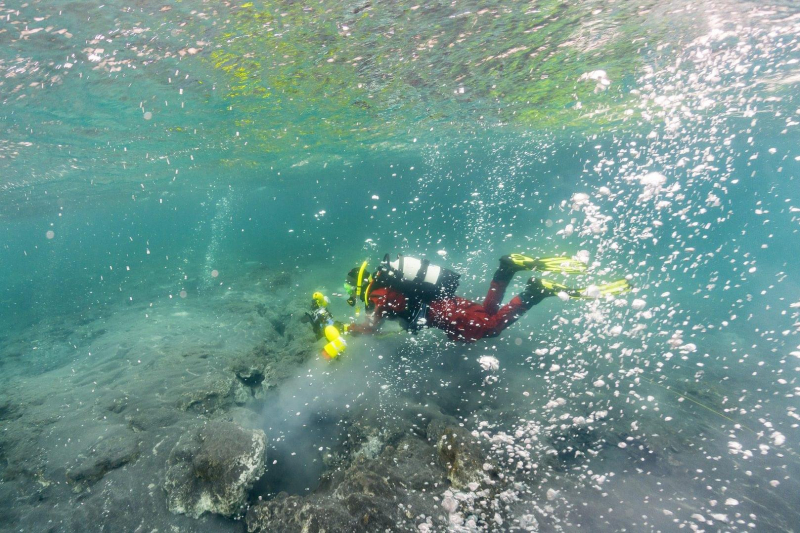
padi.com








